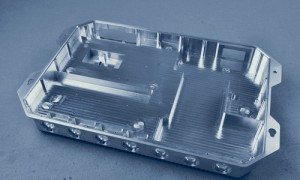What are the methods of manufacturing aluminum?
Views: 546 Update date: Jan 02,2024
Aluminum is produced through a process called aluminum smelting, and there are primarily two methods for manufacturing aluminum: Bayer process and Hall-Héroult process.
Bauxite Refining: Bauxite is processed through the Bayer process to extract alumina (aluminum oxide). In this process, bauxite is crushed, mixed with sodium hydroxide, and then heated in high-pressure vessels. This results in the formation of a solution of sodium aluminate and undissolved bauxite residue (red mud).
Precipitation of Alumina: The solution is then cooled, and alumina is precipitated out of the solution using various methods.
Alumina Dissolution: Alumina is dissolved in molten cryolite (a mineral) at high temperatures, forming a conductive electrolyte.
Electrolysis: The dissolved alumina is subjected to electrolysis in a carbon-lined cell. Carbon anodes are used, and a large electric current is passed through the molten solution. This causes aluminum ions to be reduced at the cathode, forming liquid aluminum metal.
Oxygen Evolution: Oxygen is evolved at the carbon anodes as a byproduct.
Collection of Aluminum: The liquid aluminum sinks to the bottom of the cell, where it is collected and periodically siphoned off.
Both processes are energy-intensive, with the Hall-Héroult process being particularly energy-demanding due to the high temperatures required for the electrolysis. However, it remains the most widely used method for primary aluminum production. Recycling aluminum from scrap is another important method, which consumes significantly less energy compared to primary production and helps in conserving resources.
Prev: What is considered low volume production?
Next: Is aluminum good for machining?
Bayer Process:
Bauxite Mining: The first step involves the extraction of aluminum ore, known as bauxite, usually found in tropical and subtropical regions.Bauxite Refining: Bauxite is processed through the Bayer process to extract alumina (aluminum oxide). In this process, bauxite is crushed, mixed with sodium hydroxide, and then heated in high-pressure vessels. This results in the formation of a solution of sodium aluminate and undissolved bauxite residue (red mud).
Precipitation of Alumina: The solution is then cooled, and alumina is precipitated out of the solution using various methods.
Calcination: The precipitated alumina is then subjected to calcination, a process of heating to remove water and convert it into aluminum oxide.
Hall-Héroult Process:
Electrolytic Reduction: The Hall-Héroult process is the primary method for aluminum smelting. It involves the electrolytic reduction of alumina into aluminum metal using molten cryolite as a solvent.Alumina Dissolution: Alumina is dissolved in molten cryolite (a mineral) at high temperatures, forming a conductive electrolyte.
Electrolysis: The dissolved alumina is subjected to electrolysis in a carbon-lined cell. Carbon anodes are used, and a large electric current is passed through the molten solution. This causes aluminum ions to be reduced at the cathode, forming liquid aluminum metal.
Oxygen Evolution: Oxygen is evolved at the carbon anodes as a byproduct.
Collection of Aluminum: The liquid aluminum sinks to the bottom of the cell, where it is collected and periodically siphoned off.
Both processes are energy-intensive, with the Hall-Héroult process being particularly energy-demanding due to the high temperatures required for the electrolysis. However, it remains the most widely used method for primary aluminum production. Recycling aluminum from scrap is another important method, which consumes significantly less energy compared to primary production and helps in conserving resources.


